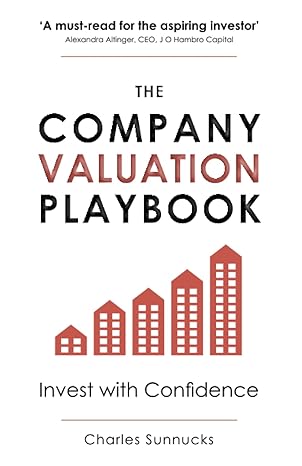

I am stuck on questions 3-8. We are supposed to use Excel to solve them, but my biggest problem is just setting up the formulas correctly from the question and really need some guidance. thank you.
. Suppose the company can only survive for 20 years. Argue that the answer in question 1 is the solution to Outcome 1. . Now, suppose E decides to go on the show. The show appearance is great marketing. Aer the appearance, the growth rate increases to 12%. What is the new present value of earnings assuming life of 20 years? Note that P takes 5% equity. What is the minimum growth rate so that it is protable for E to go on the show? . Plot E's equity value as a function of the growth rate. (xaxis: E's belief about the growth rate from being on the show; y-axis: E' equity value). What does the payoff look like? . Argue that the answer to question 3 is the answer to outcome 2. . Now, consider the effect of competition. Assume for the moment that B does not have a patent. Then, going on the show may create more rivals --- the lifespan decreases to 15 years. In this case, what is the minimum growth rate to justify going on the show? . What do you learning from analyzing answers to questions 3, 5 and 6? . Now consider Outcome 3. A shark, S, decides to take 30% of the equity. Additionally, P takes 5% of equity. S provides operational expertise and a sales network: the net margin to 60% and the growth rate increases to 20%. What is the new E's equity value? Note that there are two variables to analyze: the net margin and the growth rate. Provide a range of values of net margin and the growth rate so that E decides to collaborate with S. Do the values seem reasonable? . From the analysis of these questions, what do you infer? What do you expect to see on the show: which E's do you expect to take a deal; which E's do you expect to not take a deal? HW 1 - Shark Tank Consulting Your job is to consult a potential entrepreneur (E) who wants to appear on the Shark Tank show. Your ultimate goal is to make her understand if it is worth it to appear on the show. Just to appear on the show, the Shark Tank producers (P) get the maximum of either 2% of future revenues or 5% of equity. To answer this question, assume that P takes 5% of equity for simplicity. There can be three potential outcomes: 1) The entrepreneur decides not to go on the show; 2) The entreprenem decides to go on the show but does not take a deal; 3) The entrepreneur goes on the show and takes a deal. In option 2, the entrepreneur gives up 5% equity. Also, suppose that E gives up 30% of equity if she decides to take a deal. Your job is to advise your client on the optimal strategy. The goal of this HW is for you to review discounting and start drinking about options in real life. Note that all three outcomes are options for E. Obviously, E will choose the best outcome. 1. Suppose the sales in the rst year, R, are $100 and they grow every year ata growth rate of g = 10%. Also, suppose that the net margin is 40%. This means that earnings in the rst year are going to be 0.4*100 = $40. Assuming that the discount rate, d, is 25%. What is the present value of earnings assuming that the company survives for 10 years? Repeat the same exercise and assume that the company survives 15 years, 20 years and 100 years










